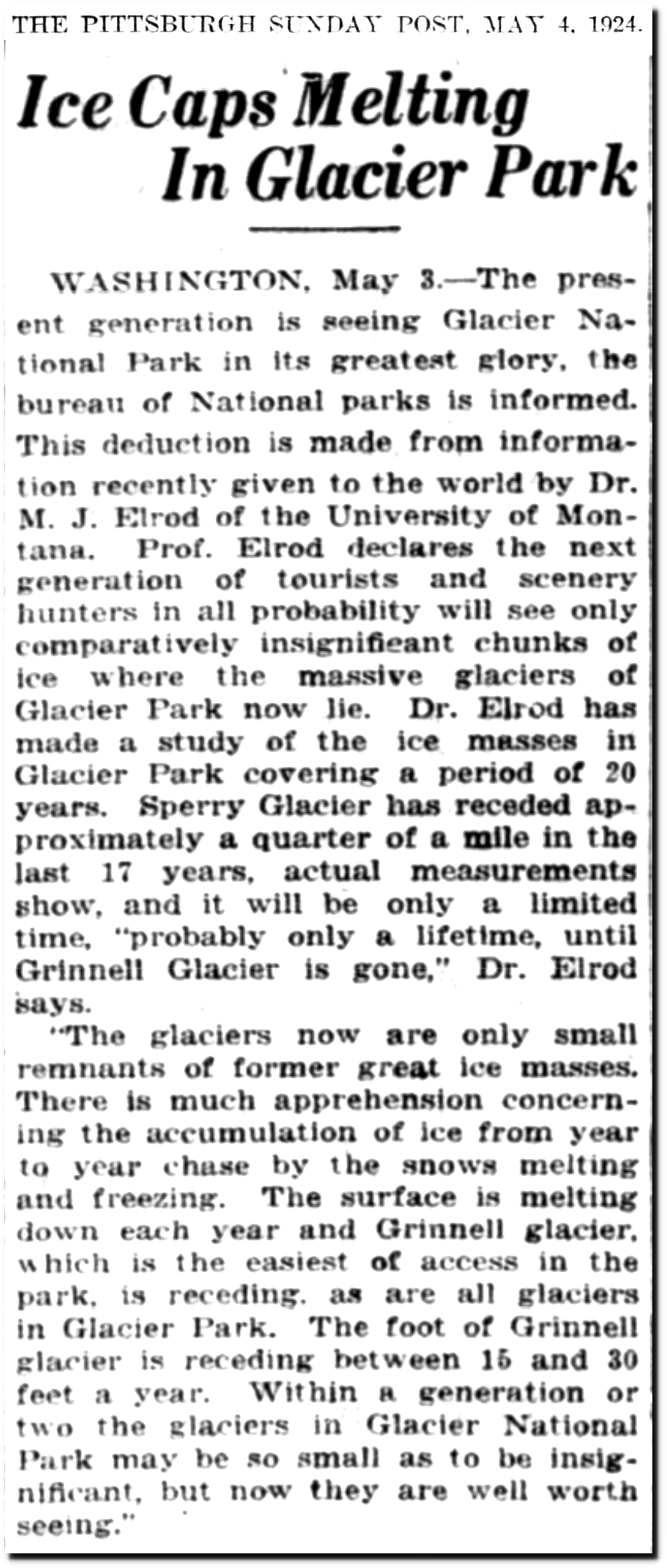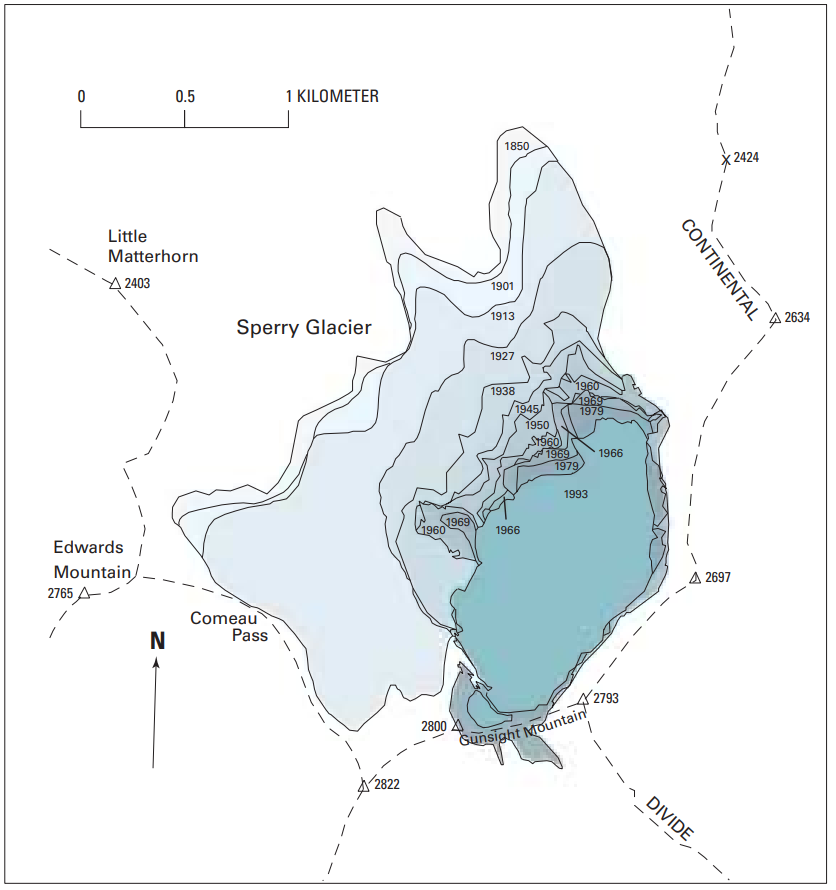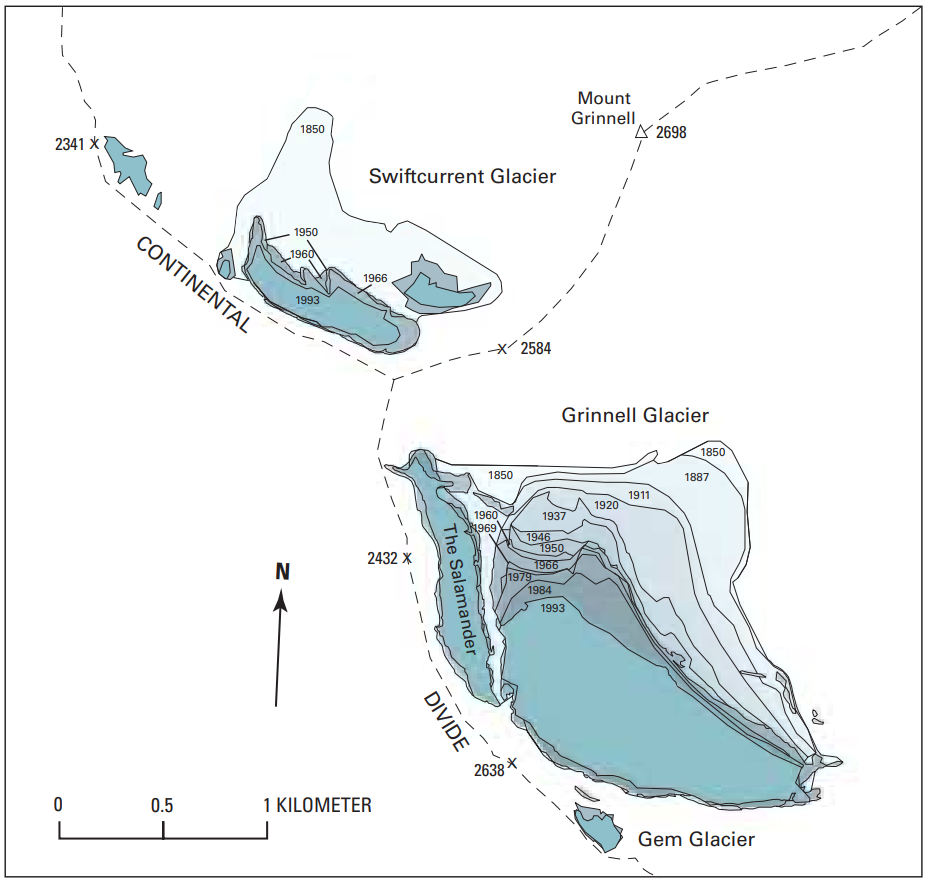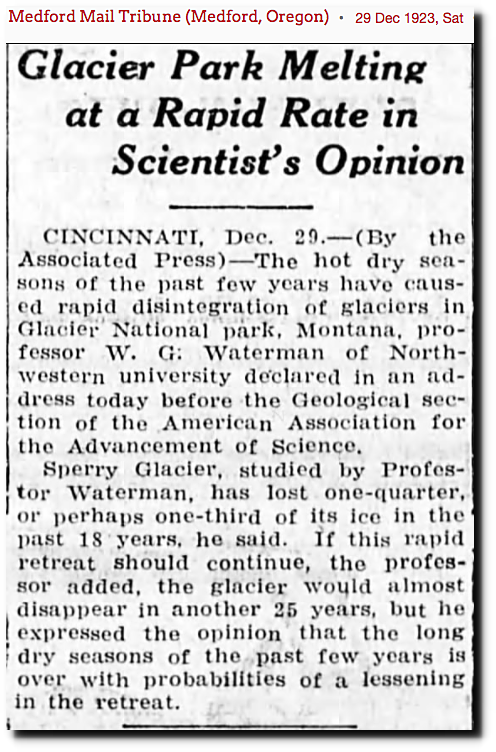“THE PITTSBURGH SUNDAY POST, MAY 4. 1924.
Ice Caps Melting In Glacier Park
WASHINGTON, May 3.—The present generation is seeing Glacier National Park in its greatest glory, the. bureau of National parks is informed. This deduction is made from information recently given to the world by Dr. M. J. Elrod of the University of Mon-tana. Prof. Elrod declares the next generation of tourists and scenery hunters In all probability will see only comparatively insignificant chunks of ice where the massive glaciers of Glacier Park now lie. Dr. Elrod has made a study of the ice masses in. Glacier Park covering a period of 20. years. Sperry Glacier has receded approximately a quarter of a mile in the last 17 years, actual measurements show, and it will be only a limited time, “probably only a lifetime, until Grinnell Glacier is gone,” Dr. Elrod says.
“The glaciers now are only small remnants of former great ice masses. There is much apprehension concerning the accumulation of ice from year to year chase by the snows melting: and freezing. The surface is melting. down each year and Grinnell glacier, which is the easiest of access in the park, is receding. as are all glaciers in Glacier Park. The foot of Grinnell glacier is receding between 15 and 30 feet a year. Within a generation or two the glaciers in Glacier National Park may be so small as to be insignificant, but now they are well worth seeing.”
04 May 1924, Page 33 – Pittsburgh Daily Post at Newspapers.com
The Grinnell Glacier is still there and has grown over the past thirty years.
(99+) GLACIERS OF THE CONTERMINOUS UNITED STATES | Richard Menicke and Carl Key – Academia.edu
“Medford Mail Tribune (Medford, Oregon) – 29 Dec 1923, Sat
Glacier Park Melting at a Rapid Rate in Scientist’s Opinion
CINCINNATI, Dee. 29.—(By the Associated Press)—The hot seasons of the past few years have caused rapid disintegration of glaciers in Glacier National park, Montana, professor W. G: Waterman of North- western university declared in an ad- dress today before the Geological section of the American Association for the Advancement of Science,
Sperry Glacier, studied by Professor Waterman, has lost one-quarter, or perhaps one-third of its ice in the past 18 years, he said. If this rapid retreat should continue, the professor added, the glacier would almost disappear in another 25 years, but he expressed the opinion that the long dry seasons of the past few years is over with probabilities of a lessening in the retreat.”






